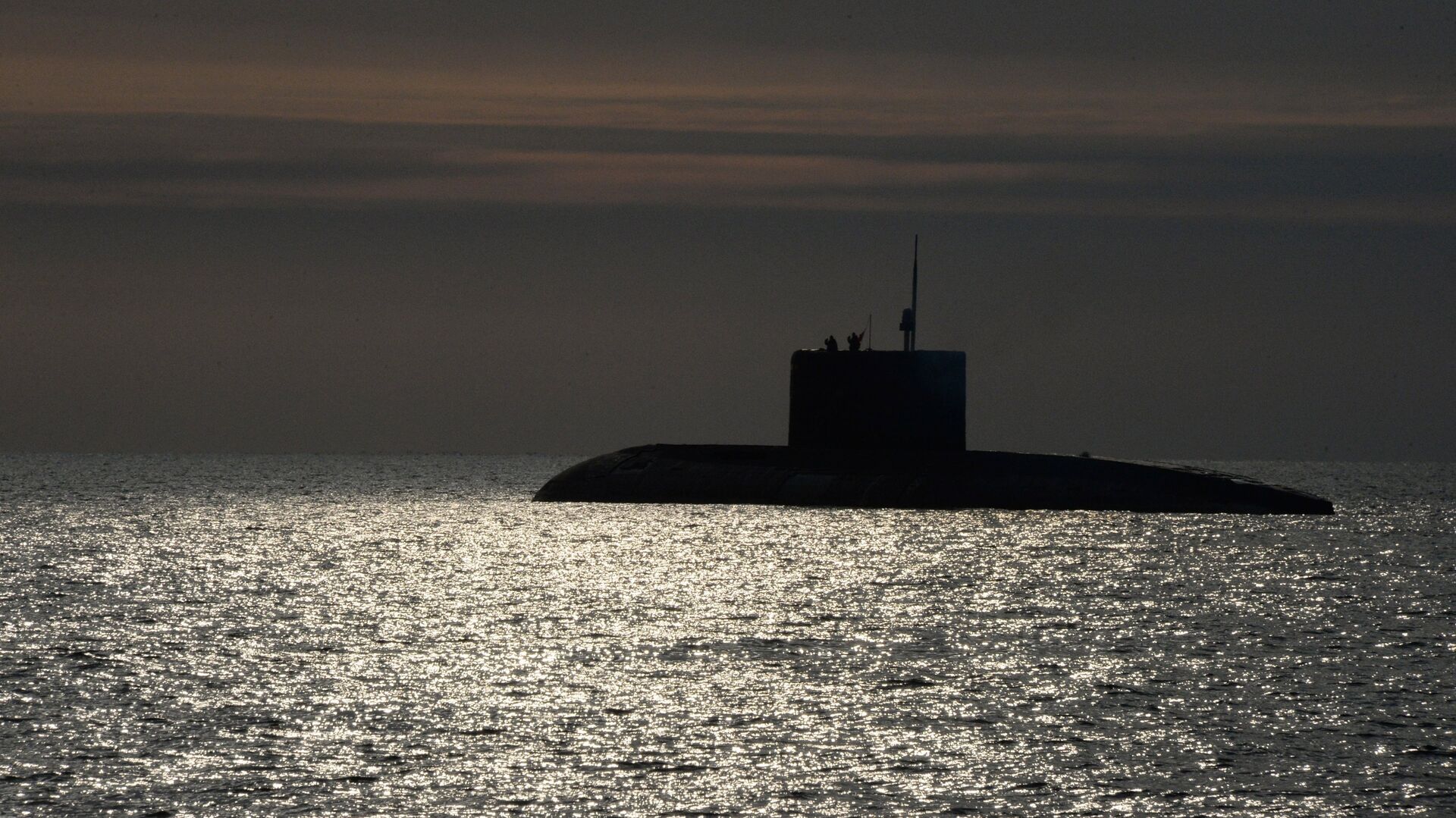https://sputnikglobe.com/20221010/russian-nuclear-submarines-could-get-smaller-in-future---rubin-design-bureau-1101663672.html
Russian Nuclear Submarines Could Get Smaller in Future - Rubin Design Bureau
Russian Nuclear Submarines Could Get Smaller in Future - Rubin Design Bureau
Sputnik International
MOSCOW, (Sputnik) - The Russian nuclear powered submarine (NPS) of the future generation will be reduced in size, but this will not affect the number of... 10.10.2022, Sputnik International
2022-10-10T01:26+0000
2022-10-10T01:26+0000
2022-10-10T01:26+0000
russia
nuclear submarines
military & intelligence
https://cdn1.img.sputnikglobe.com/img/105128/74/1051287441_0:59:3433:1990_1920x0_80_0_0_fb303c7e7ab66365ca82f0a20ab2d47f.jpg
At the 8th international military-technical forum ARMY-2022 this summer, Russia’s Central Design Bureau for Marine Engineering "Rubin" unveiled a concept model of a new nuclear submarine, Arktur, which could be supplied to the Russian Navy in the second half of the 21st century.Plans to Create New AIP System For SubsAir-independent propulsion (AIP) increases a submarine’s stealth since it allows it to operate without access to atmospheric oxygen, removing the need for surfacing."We are creating an AIP system based on fuel elements with hydrogen production from diesel fuel. We get water from oxygen and hydrogen, and electricity is released. The most difficult question is: where to get hydrogen from? Carrying it with you is cumbersome, loading it is difficult and dangerous. Therefore, we propose to obtain it from diesel fuel," Baranov explained to Sputnik.Varshavyanka Sub to Have Hydroacoustic Towed Antennas "‘Rubin’ has performed a lot of studies showing possible directions for improving the project - from equipping [the subs] with extended towed hydroacoustic antennas to yet another modernization of the power plant," Baranov said, adding that there is a continued demand for Varshavyanka subs from the Russian Navy and foreign customers.Project 636 Varshavyanka submarines are currently being delivered to the Russian Pacific Fleet, which should have six of such subs by 2024. Another six Project 636 submarines have already been delivered to the Black Sea Fleet.In March, the CEO of the United Shipbuilding Corporation (USC), Alexei Rakhmanov, told Sputnik that the company can build two Project 636 Varshavyanka non-nuclear submarines each year.The name Varshavyanka refers to the Warsaw pact. This class of diesel-electric attack submarines was initially developed for export to Warsaw Pact nations. After the collapse of the Soviet Union, the final stages of the sub’s development were financed by China, which is the major export customer for this class.
Sputnik International
feedback@sputniknews.com
+74956456601
MIA „Rossiya Segodnya“
2022
Sputnik International
feedback@sputniknews.com
+74956456601
MIA „Rossiya Segodnya“
News
en_EN
Sputnik International
feedback@sputniknews.com
+74956456601
MIA „Rossiya Segodnya“
Sputnik International
feedback@sputniknews.com
+74956456601
MIA „Rossiya Segodnya“
nuclear submarines, military & intelligence
nuclear submarines, military & intelligence
Russian Nuclear Submarines Could Get Smaller in Future - Rubin Design Bureau
MOSCOW, (Sputnik) - The Russian nuclear powered submarine (NPS) of the future generation will be reduced in size, but this will not affect the number of weapons and drones that it will be equipped with, Andrey Baranov, Deputy Director General for Foreign Economic Activities and Military Technical Cooperation at the Rubin design bureau said.
At the 8th international military-technical forum ARMY-2022 this summer, Russia’s Central Design Bureau for Marine Engineering "Rubin" unveiled a concept model of a new nuclear submarine, Arktur, which could be supplied to the Russian Navy in the second half of the 21st century.
"From our perspective, we have the opportunity to slightly reduce the displacement of new subs. However, it is difficult to get away from large sizes, the versatility of the vessel depends on them. It seems to us that these large subs of the future should gradually become universal carrier platforms that can accommodate the maximum number of various technical equipment, including weapons," Baranov told Sputnik commenting on the prospects of NPS development in Russia.
Plans to Create New AIP System For Subs
Air-independent propulsion (AIP) increases a submarine’s stealth since it allows it to operate without access to atmospheric oxygen, removing the need for surfacing.
"We are creating an AIP system based on fuel elements with hydrogen production from diesel fuel. We get water from oxygen and hydrogen, and electricity is released. The most difficult question is: where to get hydrogen from? Carrying it with you is cumbersome, loading it is difficult and dangerous. Therefore, we propose to obtain it from diesel fuel," Baranov explained to Sputnik.
Varshavyanka Sub to Have Hydroacoustic Towed Antennas
"‘Rubin’ has performed a lot of studies showing possible directions for improving the project - from equipping [the subs] with extended towed hydroacoustic antennas to yet another modernization of the power plant," Baranov said, adding that there is a continued demand for Varshavyanka subs from the Russian Navy and foreign customers.
Project 636 Varshavyanka submarines are currently being delivered to the Russian Pacific Fleet, which should have six of such subs by 2024. Another six Project 636 submarines have already been delivered to the Black Sea Fleet.
In March, the CEO of the United Shipbuilding Corporation (USC), Alexei Rakhmanov, told Sputnik that the company can build two Project 636 Varshavyanka non-nuclear submarines each year.
The name Varshavyanka refers to the Warsaw pact. This class of diesel-electric attack submarines was initially developed for export to Warsaw Pact nations. After the collapse of the Soviet Union, the final stages of the sub’s development were financed by China, which is the major export customer for this class.


